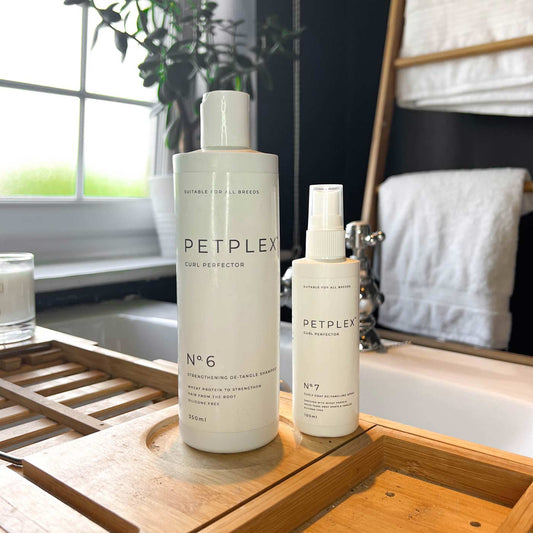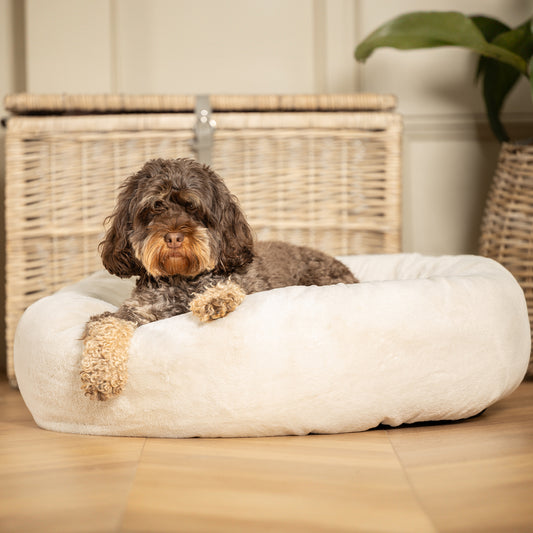For many people, dogs are more than just pets—they are family. However, for those who suffer from allergies, owning a dog can be a challenge. Fortunately, hypoallergenic dog breeds offer a solution. While no dog breed is entirely allergen-free, certain breeds produce fewer allergens and are considered better suited for individuals prone to allergic reactions. Below, we explore what makes a dog hypoallergenic, highlight some of the best dogs for allergies, and provide insight into what to expect when owning an anti-allergy dog.
What Does Hypoallergenic Mean?
The term “hypoallergenic” refers to something that is less likely to trigger an allergic reaction. In the context of dogs, hypoallergenic breeds are those that are less likely to cause allergic symptoms due to their coat type, shedding patterns, or skin conditions. It’s important to understand that even hypoallergenic dog breeds can still produce allergens; the difference is that these breeds generally shed less dander—the primary trigger for pet allergies.
Allergens from dogs typically come from their skin (dander), saliva, and urine, and not from their fur itself. When a dog sheds, these allergens are spread into the environment, which can exacerbate symptoms for allergy sufferers. Dogs that shed less or have hair that grows continuously tend to produce fewer allergens, making them more tolerable for people with sensitivities.
Common Causes of Dog Allergies
Before diving into hypoallergenic dog breeds, it's helpful to understand what causes allergic reactions in the first place. People with pet allergies usually react to proteins found in:
Dander: Small flakes of skin shed by dogs.
Saliva: Dogs lick themselves to clean, leaving saliva on their fur.
Urine: Allergy-causing proteins can also be present in dog urine.
When these proteins are inhaled or come into contact with the skin, they can trigger sneezing, runny nose, itchy eyes, skin rashes, or even asthma in more severe cases.
Characteristics of Hypoallergenic Dogs
While there is no such thing as a completely hypoallergenic dog, certain breeds are less likely to trigger allergic reactions. Here are some common characteristics of anti-allergy dogs:
- Low Shedding: Dogs that shed less hair release fewer allergens into the environment.
- Single-Coated Breeds: Breeds with only one layer of coat (as opposed to double-coated breeds) tend to shed less.
- Hair Instead of Fur: Some breeds have hair instead of fur, which grows continuously and doesn’t fall out as frequently.
- Minimal Dander: Breeds known for producing less dander are typically better for people with allergies.
- Size: Smaller dogs produce fewer allergens simply because they have less surface area, resulting in fewer particles being spread around the home.

The Best Dogs for Allergies
If you’re an allergy sufferer but can’t imagine life without a dog, you’re in luck. Below are some of the best hypoallergenic dog breeds that can make excellent companions while being kinder to your allergies.
Poodle
One of the most popular hypoallergenic breeds, Poodles come in various sizes—Toy, Miniature, and Standard—making them a versatile choice for different living spaces. Poodles have curly, dense coats that trap dander, reducing the number of allergens that are released into the air. They also don’t shed much, as their hair grows continuously like human hair. Regular grooming and bathing are necessary to keep their coats in top condition and allergen levels low.
Bichon Frise
The Bichon Frise is another fantastic hypoallergenic option. These small, cheerful dogs have a double coat with a soft under layer and a curly topcoat that prevents dander from spreading. Although they require frequent grooming to prevent matting, their lack of shedding makes them a great choice for those with allergies. Their playful, affectionate nature makes them ideal companions for families and singles alike.
Schnauzer (Miniature, Standard, and Giant)
Schnauzers are known for their distinctive beards and wiry coats. Whether Miniature, Standard, or Giant, these dogs shed very little, and their unique coat is excellent at trapping allergens. Regular trimming and grooming are essential to maintain the coat, but Schnauzers are generally low-maintenance when it comes to allergens. They are also highly intelligent and energetic, making them great companions for active households.
Maltese
The Maltese is a small dog with a beautiful, long, flowing coat of hair rather than fur. Despite their luxurious coat, Maltese dogs are known for shedding very little. Their hair continuously grows, which reduces the amount of dander they release. However, their coats require regular grooming and brushing to prevent tangles. Maltese dogs are known for being gentle, affectionate, and adaptable to various living conditions.
Portuguese Water Dog
The Portuguese Water Dog is an excellent hypoallergenic breed for active families. These dogs have curly or wavy coats that shed minimally, making them a good choice for allergy sufferers. Portuguese Water Dogs are energetic, intelligent, and thrive in households where they can get plenty of exercise. Regular grooming is required to keep their coats in good shape and reduce allergens.
Shih Tzu
Known for their royal lineage and luxurious coats, Shih Tzus have a hypoallergenic coat that sheds very little. Like the Maltese, they have hair rather than fur, which grows continuously and is less likely to spread allergens. Shih Tzus are affectionate, friendly, and love being the centre of attention. They do, however, require regular grooming to keep their long hair manageable.
Yorkshire Terrier (Yorkie)
Yorkshire Terriers, or Yorkies, have silky hair that resembles human hair. They are one of the smallest hypoallergenic dog breeds, making them ideal for allergy sufferers who want a dog with minimal shedding. Their coats require consistent grooming to prevent tangles and keep allergens at bay. Yorkies are known for their bold personalities and affectionate nature, making them great companions in smaller living spaces like apartments.
Living with a Hypoallergenic Dog: Tips for Allergy Sufferers
Even if you have one of the best dogs for allergies, managing a pet’s allergens takes effort. Here are some strategies to reduce allergic reactions when living with a hypoallergenic dog:
- Regular Grooming: Frequent grooming, including bathing and brushing, helps reduce dander and allergens on your dog’s coat. Consider using anti-allergy shampoos to further minimise allergens.
- Clean Your Home Frequently: Vacuuming, dusting, and using air filters can help trap dander and prevent allergens from accumulating in your home. Regularly washing your dog’s bedding also reduces the build-up of allergens.
- Designate Dog-Free Zones: Creating allergy-free spaces in your home, such as your bedroom, can provide you with a haven free of pet allergens.
- Wash Your Hands: After playing with or handling your dog, wash your hands to avoid transferring allergens to your face or other sensitive areas.
Owning a dog doesn’t have to be off-limits for allergy sufferers. By choosing one of the many hypoallergenic dog breeds, such as the Poodle, Bichon Frise, or Portuguese Water Dog, you can enjoy the companionship of a pet while minimising your exposure to allergens. Remember that no dog breed is completely allergen-free, but with regular grooming and proper home care, it’s possible to keep allergic reactions at bay and live happily with your new furry friend.
At Lords & Labradors, we offer a variety of luxury pet products to keep your hypoallergenic dog happy, healthy, and comfortable. Visit our website to explore our range of grooming products, bedding, and accessories designed for every breed and allergy need.






















































.jpg?v=1724239408735&options=)










































